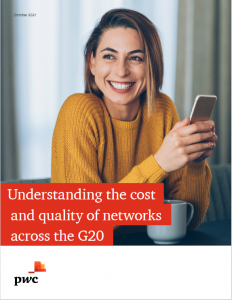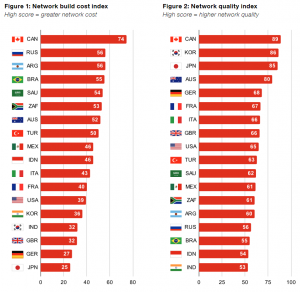On affordable broadband
Frequent readers of this page know that the issue of affordable broadband is one of my special interests, and has been for more than a decade.
There was a new report that landed on my desk last week from the National Governors Association, seeking to expand the affordability of broadband services, with strategies characterized as having “emerged among leading best practices”:
- Providing direct customer assistance;
- Incentivizing affordable rates through grant programs;
- Expanding service options; and,
- Investing in infrastructure and community anchor institutions.
The report cites data from Pew Research Center that “show adults making less than $30,000 annually are half as likely to report having home internet access as adults making $75,000 or more, with only 57 percent of low-income households reporting access in 2021.”
While only 57% of low-income households report having home internet access, the same survey indicates 86% of low-income households are using the internet. Nearly 30% of low-income households are using the internet without having access at their own home. In 2005, just 7% of low-income households had home internet access while 49% used the internet.
Pew Research is a data rich source of information for strategic policy development. Canadians should be envious. I’ve often said that we need more data to help with decision-making, especially in the delivery of communications services to under-served populations.
In early September, Environics Institute released “Lessons Learned: The Pandemic and Learning from Home in Canada” [pdf, 4.6 MB]. The report is based on a survey conducted in late November / December of 2020.
Keeping in mind that this was from a year ago, during some of the darkest days of the pandemic, I found this excerpt to be troubling:
Canadians are more likely than Americans to express concerns about the affordability of their internet or cellphone connections.
Not surprisingly, the level of concern in Canada about internet and cellphone affordability is much higher among those with lower household incomes.
Keep in mind that compared to our neighbours to the south, Canada appears to have higher levels of adoption of connectivity among lower income households, despite the availability of direct government funding for Lifeline communications services in the United States.
There isn’t an easy answer to the issue of affordability. The knee-jerk reaction by some is that lower prices are the answer. While it would be popular – who doesn’t want lower prices for everything? – in reality, lower average prices simply won’t solve the issue for the most vulnerable households, who need special affordability programs for a variety of essential services.
To date, in Canada those targeted programs have been initiatives created (and funded) by the private sector.
The Environics report had a thought provoking section with “Concluding reflections”:
One of the great strengths of Canada’s systems of public education has been their ability to promote equality of opportunity. Through publicly funded education, students from different backgrounds can benefit from well-trained teachers and well-equipped classrooms. For many students, the short term effect of the COVID-19 pandemic, through the switch to online learning, has been to effectively “privatize” our educational infrastructure, as families have had to rely on their own resources to provide the spaces, tools and connections needed for ongoing learning.
Could or should government be doing more with direct social services funding for services and devices?
What new approaches should be considered for more equitable delivery of digital government services?



